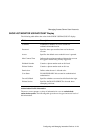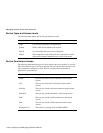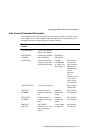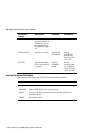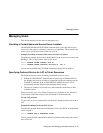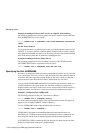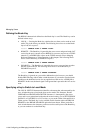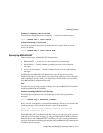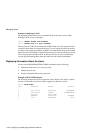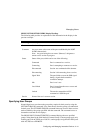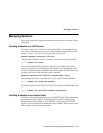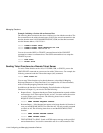
Configuring and Managing Interactive Devices 11-37
Managing Users
Example: Configuring a Key as a Switch
The following example shows how to identify “-” as the local switch for port 3:
Local> CHANGE PORT 3 LOCAL SWITCH -
Example: Disabling a Local Switch
The following example shows how to disable the local switch, which is also the
factory-set default:
Local> CHANGE PORT 5 LOCAL SWITCH NONE
Specifying BROADCAST
There are three types of BROADCAST characteristics:
•
BROADCAST — A port user uses this command to send messages.
•
Port broadcast — Defines whether a particular port can receive broadcast
messages.
•
Access server broadcast — Defines whether all port users can send broadcast
messages.
Disabling the port BROADCAST characteristic stops the port from receiving
broadcast messages from other access server ports along with access server messages,
such as shutdown. For this reason, you might want to recommend to users that they
leave BROADCAST enabled on their ports.
Note
The port user can still send messages with the access server BROADCAST enabled
and the port BROADCAST disabled.
Example: Disabling BROADCAST Messages
The following example shows how to disable port 5 from receiving broadcast
messages:
Local> CHANGE PORT 5 BROADCAST DISABLED
If any user tries to broadcast to a broadcast-disabled port, the access server enters the
following message, which identifies the port or ports by port number:
Local -111- Port(s) with broadcast disabled not notified
Broadcast disabled at port n
When BROADCAST is enabled for both the access server and a port, port users can
send and receive broadcast messages, by using the BROADCAST PORT command.
When the access server BROADCAST is disabled, port users cannot send broadcast
messages. Note that an individual port must have the port BROADCAST characteristic
enabled to receive messages.



